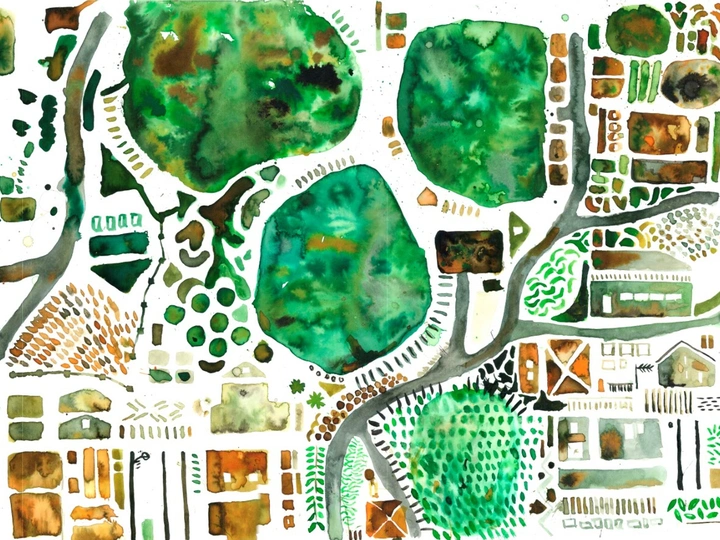Affective Cartographies: Drawing experience

I am an architect, artist and urban planner based in Spain, with over ten years of experience in projects related to territorial planning, urban regeneration, public space, and participatory processes. Alongside this technical and strategic work, drawing has consistently emerged as a key tool—not only for observation, ideation and representation, but also for dialogue, reflection and connection with place.
Over the years, drawing has become central to my methodology, and I have developed a hybrid practice between spatial design and artistic research. I explore how drawing can help us experience places differently—slowing down, paying attention, and building affective connections with the land and its stories.
As an artist and illustrator, I often use techniques such as live sketching, watercolour and printmaking to explore subjective and situated ways of seeing. I have traced textures in the landscape, reinterpreted historical maps, and even used water as a drawing material to let the territory itself leave a mark on the paper. I focus on the process more than the result, seeing drawing as a way of being present and forming relationships with what surrounds us.
I believe drawing can act as a bridge between disciplines, between people, and between different ways of knowing a place. Through it, I aim to open up conversations, question established narratives, and invite others to engage more closely and sensitively with the territories we share.
Some of my projects can be seen here: https://mirardibujar.portfolio.site/
How we represent places shapes how we relate to them. In the context of the ecological crisis—which is also a crisis of attention, care, and connection—artistic practices are essential. My proposal explores drawing as a situated, collective and embodied practice that can reconnect us affectively with the territories we inhabit, especially when addressing natural processes that have been rendered invisible in urban life.
The methodology combines cartographic research with field-based collective drawing sessions. It starts with the analysis of historical and existing maps, one key focus being the memory of water in the territory. This is followed by drawing in situ, walking and observing together, tracing both physical and intangible elements, gathering materials, and experimenting with drawing using water, letting it leave its own marks. The sessions also create space to share personal memories and stories, adding layers of lived experience to the collective process. The result is a subjective and affective cartography that reflects the process of approaching and engaging with a place.
This practice questions conventional ways of mapping, often disconnected from lived experience, and takes inspiration from critical cartography to propose more situated, relational forms of representation—ones that reflect how people perceive, experience and care for their surroundings.
In this sense, drawing becomes a way to pay attention and to build connection—a tool for seeing differently, creating shared meaning, and giving space to what usually remains unnoticed.